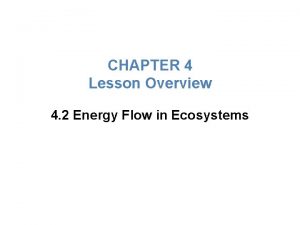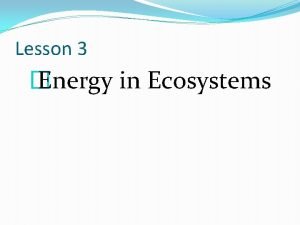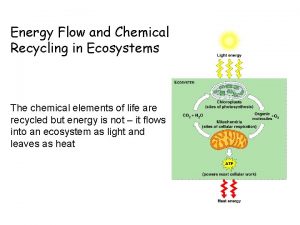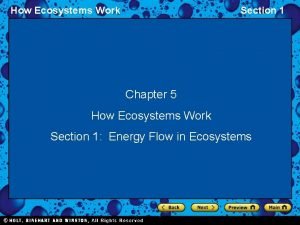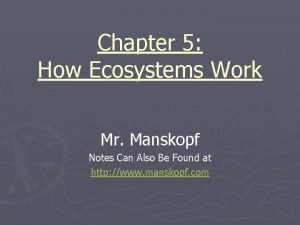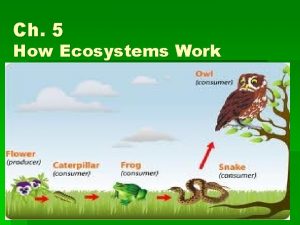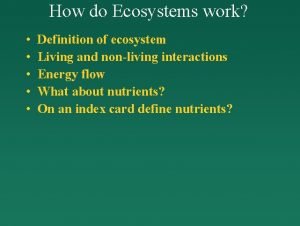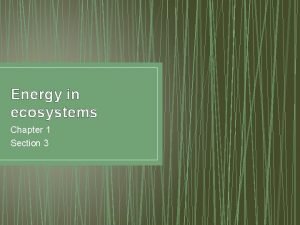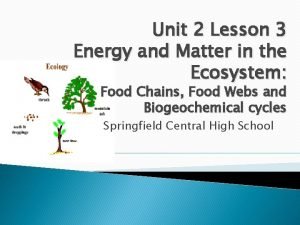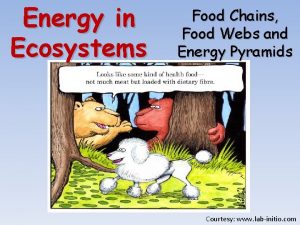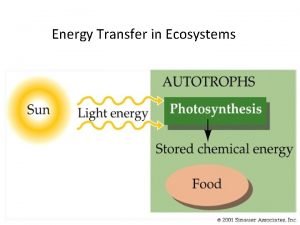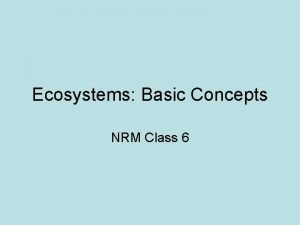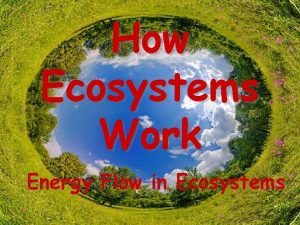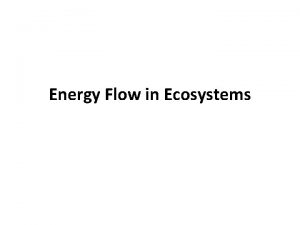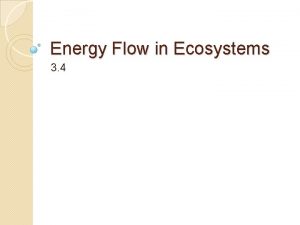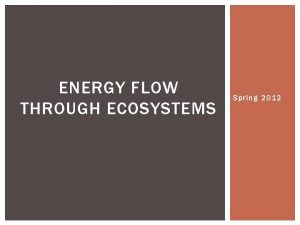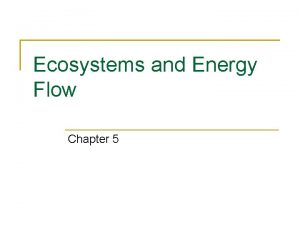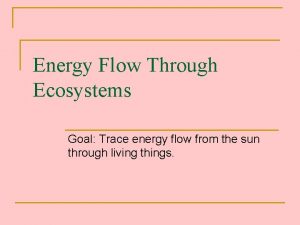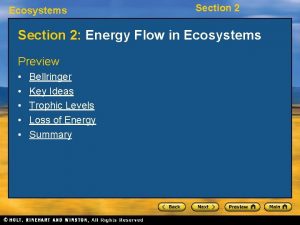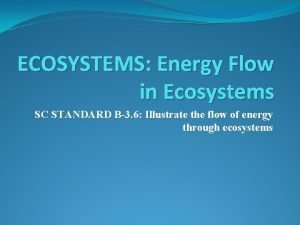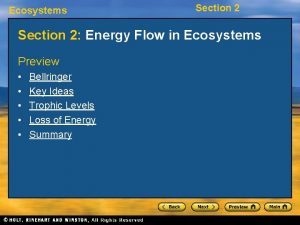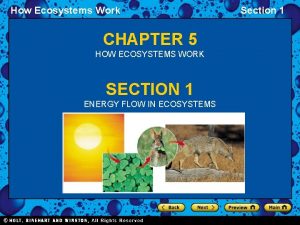How Ecosystems Work Energy Flow in Ecosystems Energy




















- Slides: 20

How Ecosystems Work Energy Flow in Ecosystems

Energy Flow • Energy flow through an ecosystem determines the systems capacity to sustain life. • Sunlight is the main energy source for life • Some organisms rely on the energy stored in inorganic chemical compounds.

Life Depends on the Sun • Energy from the sun enters ecosystems when plants, algae, and some bacteria trap the energy during photosynthesis.

Photosynthesis (how energy is trapped) Autotrophs harness sunlight energy to make their own food in the form of carbohydrates!


energy other sugars fruits e. g. seed germination GLUCOSE protein starch storage e. g. starch in potato cytoplasm cellulose cell walls

Anything you eat can be traced back to a PRODUCER which can be traced back to the SUN! SUN

The Energy Connection Organisms get energy as either: 1. producers – autotrophs 2. consumers – heterotrophs 3. decomposers – natures recyclers

From Producers to Consumers • Because plants make their own food, they are called producers • A producer is an organism that can make organic molecules from inorganic molecules • Producers are also called autotrophs “self-feeders”

• Organisms that get their energy by eating other organisms are called consumers • Consumers are also called heterotrophs “other-feeders”

An Exception to the Rule • Deep-ocean communities of worms, clams, crabs, mussels, and barnacles, exist in total darkness on the ocean floor, where photosynthesis cannot occur • The producers in this environment are bacteria that use hydrogen sulfide • Other underwater organisms eat the bacteria or the organisms that eat the bacteria.

What Eats What? • Organisms can be classified by what they eat. Types of Consumers: 1. 2. 3. 4. Herbivores Carnivores Omnivores Decomposers

Herbivores eat plants. They are primary consumers

Carnivores eat animals. They are secondary consumers

Omnivores eat both plants and animals. They are third level consumers. Scavengers are omnivores that feed on dead plants and animals.

Decomposers break down dead organisms. They are nature’s recyclers.

detritivores • feed on dead organic matter (detritus) • Earthworms, crabs, roly poly

If the producers make glucose using the sun’s energy, then how do consumers use it for fuel?

Photosynthesis and Cellular Respiration • https: //www. youtube. com/watch? v=M 1 i. Rx Ca. Fjoo

1. What determines an ecosystems capacity to sustain life? 2. What is the source of all energy on Earth? 3. Name 2 ways autotrophs can get their energy. 4. How do heterotrophs get their energy? 5. What is detritus? 6. Give an example of a decomposer. 7. Describe the chemical equation for cellular respiration using a simple sentence. 8. Explain the relationship between cellular respiration and photosynthesis. 9. Name the type of heterotroph: a. That are recyclers b. That eat plants c. That feed on flesh d. That feed on dead organic matter e. That feed on both plants and animals Review
 Chapter 4 lesson 2 energy flow in ecosystems
Chapter 4 lesson 2 energy flow in ecosystems Which marine ecosystem contains the fewest producers
Which marine ecosystem contains the fewest producers Flow of energy
Flow of energy Primary consumers
Primary consumers Section 1 energy flow in ecosystems
Section 1 energy flow in ecosystems Flow of energy vs flow of matter
Flow of energy vs flow of matter Flow of energy vs flow of matter
Flow of energy vs flow of matter How ecosystems work
How ecosystems work Chapter 5 how ecosystems work study guide
Chapter 5 how ecosystems work study guide How ecosystems work
How ecosystems work How do ecosystems work
How do ecosystems work Physics 03-02 potential energy and conservative forces
Physics 03-02 potential energy and conservative forces Section 4 review physical science
Section 4 review physical science Section 3 energy in ecosystems
Section 3 energy in ecosystems Chapter 42 ecosystems and energy
Chapter 42 ecosystems and energy Energy flow trophic levels
Energy flow trophic levels Phosphorus cycle
Phosphorus cycle Lab food chains and energy in ecosystems
Lab food chains and energy in ecosystems How does energy move through most ecosystems on earth
How does energy move through most ecosystems on earth Energy transfer in ecosystem
Energy transfer in ecosystem Ecosystem definition class 6
Ecosystem definition class 6
